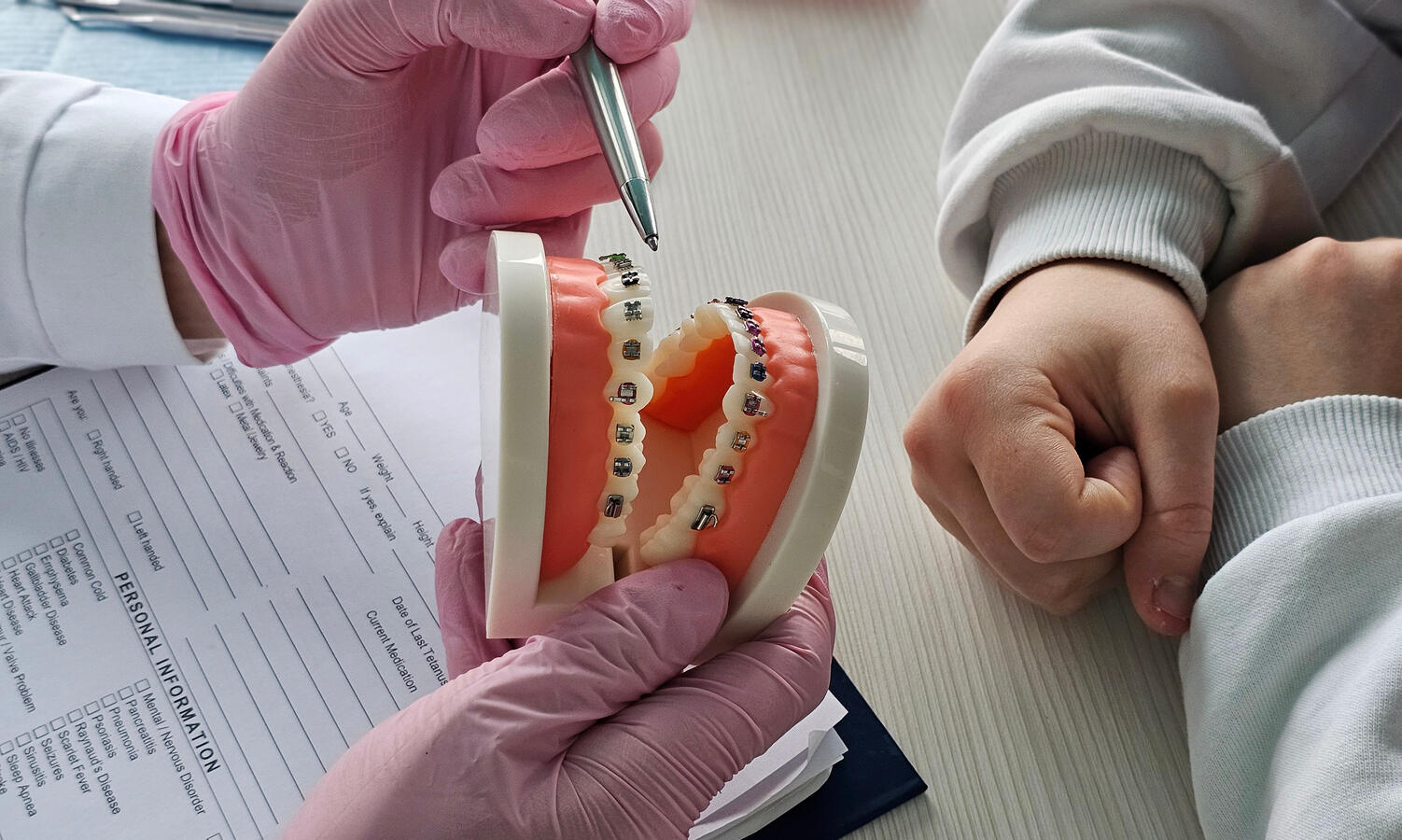One of the biggest barriers to orthodontic treatment for adult patients is the time commitment, both in terms of treatment duration and appointment scheduling. Our orthodontists often hear from patients that scheduling and the time required to receive treatment are major factors in their decision. But luckily, orthodontic treatment is now more accessible and flexible than ever.
Advancements in Orthodontics
Technology has drastically changed and enhanced many aspects of daily life, reducing the time it takes to complete various tasks. Orthodontics is no exception, with advances in technology allowing 6 to 10-week intervals between orthodontic appointments to help fit treatment into even the busiest of schedules. If you’re worried about finding time for orthodontic treatment, continue reading to learn how new, state-of-the-art practices are transforming the accessibility of orthodontics.
Aligners vs. Braces
The materials used in today’s orthodontic treatments have allowed orthodontists to create more customized solutions that require less hands-on adjustment. One such solution is aligners, nearly invisible plastic shells that are custom-formed to fit your mouth and apply pressure sequentially to gently move your teeth. Unlike braces, which require the orthodontist to periodically adjust the wires, your orthodontist will provide multiple aligners at a time, with each worn for one to two weeks before moving to the next one. This can significantly cut the frequency of your orthodontic visits, helping you achieve a beautiful smile without compromising your schedule.
New and Improved Braces Equipment
While we typically think of metal brackets when we think of braces, it’s actually the wires that are responsible for moving the teeth into their correct positions. While the brackets serve as “handles” to hold them, the wires apply constant pressure to slowly guide your teeth into the desired positions.
Back in the day, wires became inactive after only a few weeks, requiring patients to visit the orthodontist more frequently to change or adjust the wires so treatment could progress. However, orthodontics has come a long way since then, with new and improved wires that are engineered to last longer and apply pressure for a greater period of time. This translates to fewer, less frequent trips to the orthodontist with the same reliable results.
In addition to the already long-lasting wires used today, your orthodontist may use custom braces or bent wires to further reduce the number of office visits. Keep in mind that your orthodontist is planning for your treatment to happen as efficiently and effectively as possible, and is dedicated to working with you to find the best treatment plan for your smile and schedule.
Comprehensive Dental Imaging and X-Rays
Your orthodontist will use advanced diagnostic tools to ensure your treatment plan is effective and precisely tailored to your unique needs. X-rays and dental imaging technology are employed to gain a detailed view of your teeth, jaws, sinuses, and soft tissues, allowing your orthodontist to design a customized treatment plan that addresses all aspects of your smile, from functionality to aesthetics, while minimizing potential complications.
This state-of-the-art imaging also enables your orthodontist to create a treatment plan that is both effective and time-efficient, ensuring you receive the best treatment possible while minimizing the number of required office visits.
Why Are In-Person Orthodontic Visits Required?
While there have been significant advancements in orthodontics, in-person visits are still needed. Even the most carefully planned treatments need to be monitored to ensure that treatment stays on course, and visiting an orthodontist is the best way to guarantee you get the smile you’ve dreamed of once your treatment is complete.
Periodic in-person visits let your orthodontist keep an eye on your tooth movement and personally evaluate the health of your teeth and gums. This is also the perfect time for them to ensure that your appliance is still properly attached to your teeth. In between visits, should you have a problem —if a wire is out of place, a bracket comes loose, or if you misplace an aligner — contact your orthodontist to make them aware of the problem and ask about the necessary next steps. Treatment can come to a standstill if your braces or aligners are unable to do their jobs, and going to your scheduled in-person orthodontic visits can ensure that no problems have arisen that may hinder your treatment.
Create an Orthodontic Treatment Plan That Fits Your Schedule with an AAO Orthodontist
An AAO orthodontist’s goal is to help you complete treatment on time and gain the healthy, beautiful smile you’ve always wanted. It’s a worthwhile team effort — and whether it’s for your child or for yourself, it’s one that will take less time away from your busy life than you might have guessed!
The good news is, when you trust an AAO orthodontist, you’re putting your oral health in great hands. The American Association of Orthodontists (AAO) is open exclusively to orthodontists who have graduated from dental school and completed an additional two- to three-year residency program, ensuring only highly qualified professionals are admitted for membership.
Whether you’re working a full-time job or juggling a busy school and social schedule, when you choose an AAO orthodontist, you can rest assured that your treatment will be tailored to your unique needs. To start your orthodontics journey and create a treatment plan that fits your timeline, find an AAO orthodontist near you using our Find an Orthodontist tool today.



